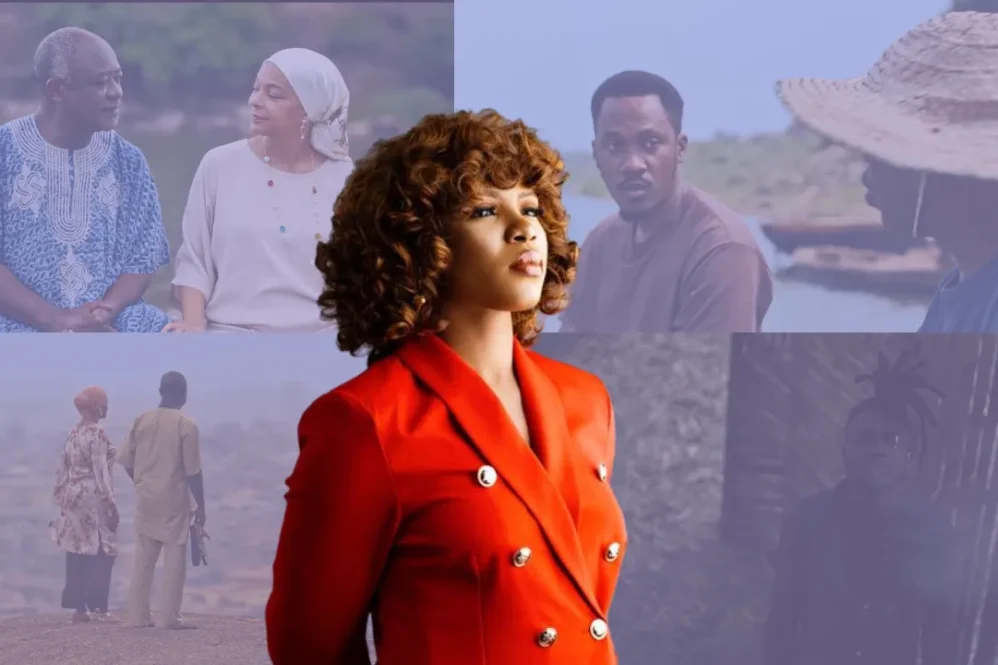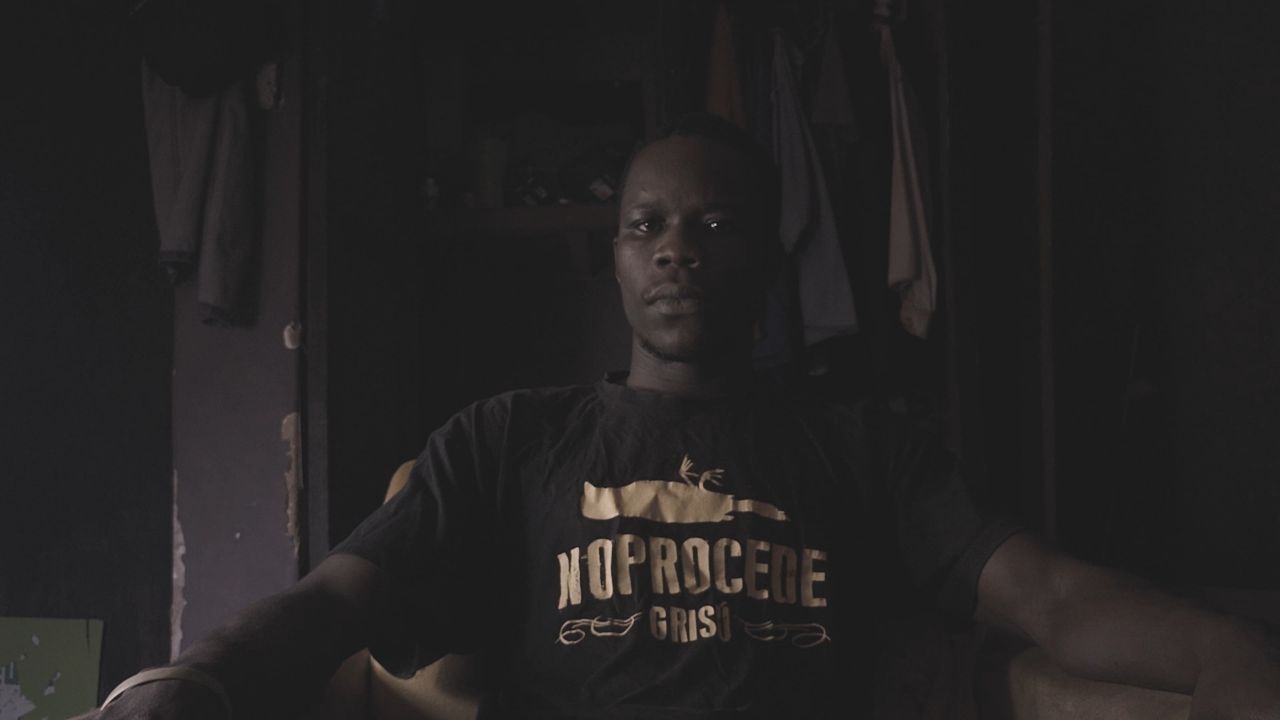You can feel Wingonia Ikpi’s eagerness and excitement as she talks about The Lost Days, you can tell her eyes light up the way a storyteller’s do when the tale is still alive in her bones. The film, at once intimate and endearing, unfolds across a series of striking locations: a house that holds transgenerational memories, an expansive forest, a quiet shoreline, each space humming with unspoken meaning.
For Ikpi, whose directorial debut premiered on Prime Video on July 11, 2025, as part of a First Features initiative, these are not mere settings but characters in their own right, shaping the story as much as the people who walk through them.
In our conversation, she unpacks the layers of symbolism hidden in these places and explains how the film’s geography became the emotional map for her characters’ journeys.
(Click to Follow the What Kept Me Up channel on WhatsApp)
This interview has been edited for length and clarity.
Spoiler Alert!
Let’s start with the reception to The Lost Days. How has it been so far?
The reception has been good. I’ll say a little better than I thought, since there haven’t been a lot of stories like this. First of all, it’s a little bit difficult to get attention with a drama in the current industry landscape. Secondly, because it’s old love, a territory that we haven’t tested enough in Nollywood. I was really looking forward to seeing what people felt. The negatives we have received are from people who wish they’d gotten a romance story from start to end. Good thing we opened the doorway to these types of stories.
That was something I noticed, too. A lot of viewers seemed to wish it leaned fully into the romance.
Yes, a few people did, but a full romance was not the goal.
Let’s talk about the most prevalent location in the film. Something I found striking was the use of nature as a kind of safe space. For example, the waterside location appeared in a number of emotionally charged scenes, healing, connection, reflection, and sometimes even across generations. Was there something that inspired you to anchor those scenes there? Because I remember feeling so calm: the birds tweeting, the fishermen rowing early in the morning.
Yes, absolutely. That was a very intentional choice. From the beginning, I set out to portray Abeokuta not just as a backdrop, but as a character in the film itself. When the setting of a story is portrayed as a character, it is possible to attach different emotional qualities to different locations. The waterside became the embodiment of connection, reflection, and healing, like you have mentioned. It served as a sanctuary where characters could have those quiet, generational conversations away from other people. Shout-out to Abeokuta for the tweeting birds, I remember desperately wishing for birds and it happened, such great luck!
In reverse, to heighten the intensity of the drama, like the kidnapping scenes, we sought out locations that felt overwhelming, chaotic, and imposing.
The forest
The forest was intentionally overwhelming. To emphasise that feeling, we often used very wide shots. The goal was to make the audience feel small and immersed in that stress, to truly see what that pressure looks like from the outside. This was a deliberate contrast to the calm, open nature of the river.
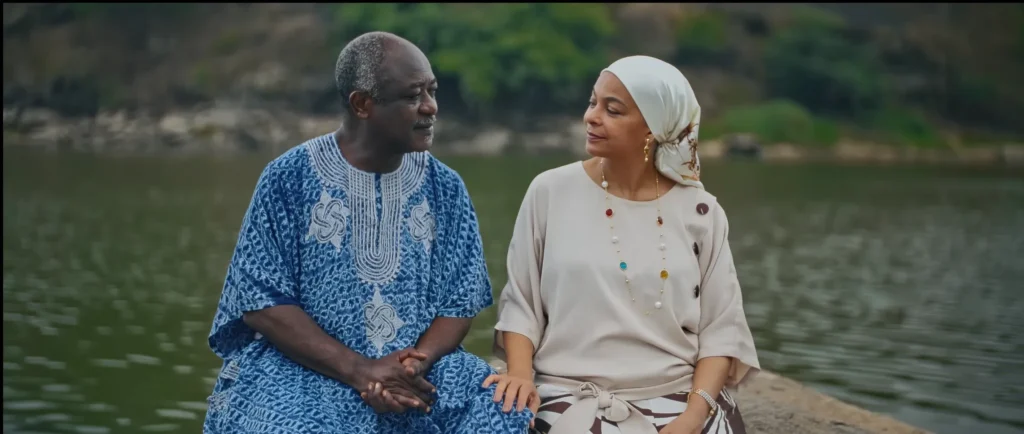
At the beginning of the film when Baba Kola shows Chisom around, there’s a line when she is by the water, and she goes, “Why can’t all of life be like this?” Was that moment meant to contrast the chaos of the outside world with the serenity of nature? Or was there a deeper longing being voiced, especially considering everything she had been through, losing her husband, fighting cancer, and reconnecting with her son?
Yes, it was very intentional, especially for Chisom’s character. There’s a frame in the film that a lot of people miss: when she returns from the hospital, there’s a family photo where her husband and daughter are smiling, but Chisom looks stern.
That picture tells a lot.
Before we meet this softer Chisom, she was a boss woman in Lagos, stern, successful, and in control. Cancer changed her. She realised she couldn’t control everything and needed to soften, especially in her relationships. Her life has been full of chaos: loss, illness, and building an empire. Coming to a slower, quieter place like Abeokuta isn’t just about peace; it’s about finding peace of mind after everything she’s been through. The place feels like home, even if it isn’t. I grew up in a small town myself, so I wanted to reflect that lifestyle, the contrast between Lagos and Abeokuta. Even when we filmed in Abeokuta, there was a calmness that shaped the atmosphere. That scene by the water was really the soul of the film. Chisom wasn’t just reflecting, she was seeking reconnection, empathy, and healing.
Speaking more about nature, there’s a scene where Baba Kola talks about how nature has kept her beauty, and he immediately connects that to Chisom, saying her beauty is just as timeless. It felt very poetic. How did you approach the idea of ageing and timelessness through memory and space?
Our protagonists are adults in their 60s. We approached ageing and timelessness by directly linking the characters’ enduring love to nature’s eternal beauty. The scene at Olumo Rock was the perfect embodiment of that idea.
In the story’s backstory, this was where Chisom and Baba Kola had first met, so returning to that same place after decades is incredibly powerful. The rock itself is a symbol of timelessness; it has witnessed generations, wars, leaders, and countless challenges, yet it remains beautiful. This is a direct metaphor for their love. They have faced their own battles: cancer, a secret kept for thirty years, and the passage of time itself. Yet, when they return to the place where they first fell in love, their feelings are just as pure and steadfast as the rock they stand on. Kola’s dialogue connects Chisom’s beauty to the rock’s enduring beauty to show that their love, like nature, is timeless and has weathered life’s storms.
This thematic importance is actually what convinced us to shoot there, despite significant challenges. The climb was so physically demanding for our actors in their sixties that we almost cancelled and had to reduce two planned scenes to just that one. I used the power of this very metaphor: the need to show their love standing the test of time, just like Olumo rock to persuade the team it was essential. So, the location became more than a backdrop; it became active proof of their resilience.
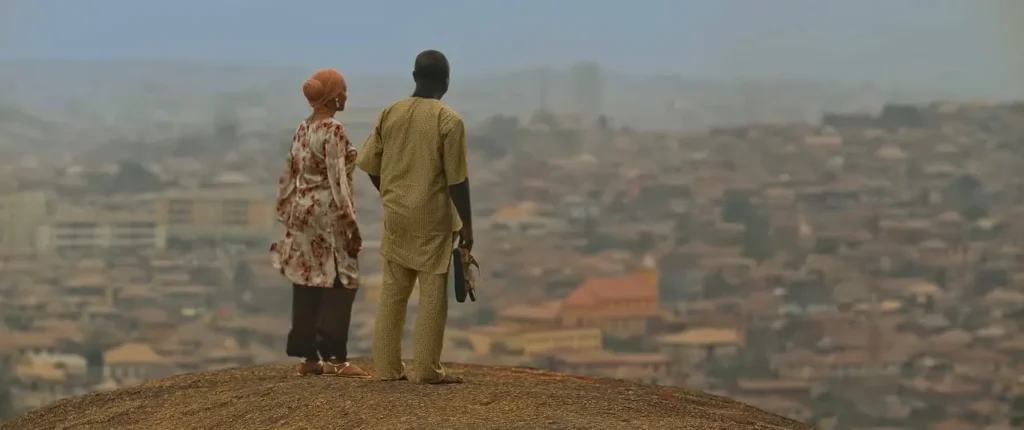
I noticed a pattern of shared spaces and repeated history, like Moses taking Kim to the same waterside where Kola took Chisom. It felt like an emotional inheritance of grief, love, and even tradition. Was that deliberate?
Yes, it was entirely deliberate. The repetition of spaces is a core part of the film’s language, designed to show how emotional legacies, both of love and of grief, are inherited and revisited across generations. That specific scene with Moses and Nkem at the waterside is an example. We used the calm and safety of this location established earlier with Kola and Chisom to create a sense of dramatic irony. The audience is misled into anticipating a moment of pure connection because of the location’s history, which makes Moses’s manipulation more unsettling.
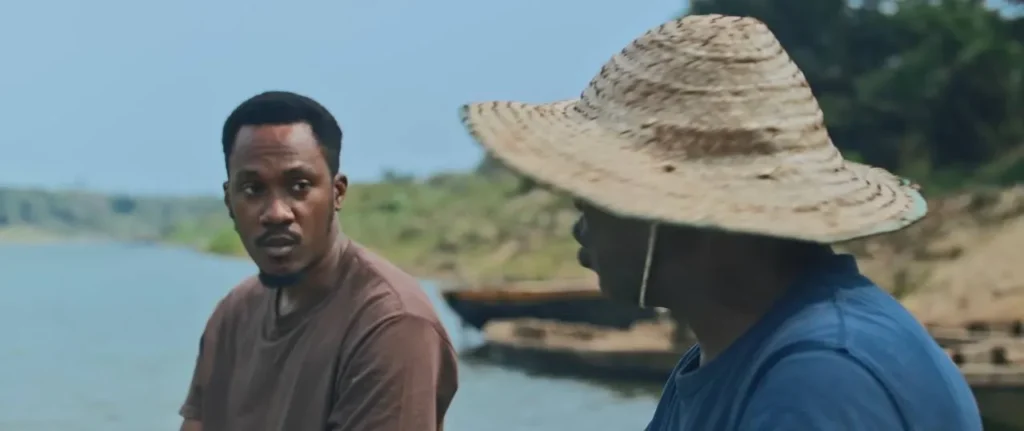
Another example of shared spaces & repeating history is the room. The same one Kola’s late wife hid Chisom in, and the same one Chisom stays in later. When she enters, she looks around like she’s been there before. That room holds memories.
Yes, that room is a perfect example of repeated history. Its symbolism is multi-layered. It’s the same room where Chisom hid when she was pregnant with Moses, and it’s where Ronke (Kola’s Mum) was kept during her illness. We painted it a drained grey to visually communicate that life and colour had left it, and this colour is only brought back by Chisom.
It is the relevance of this room to Kola that makes him antagonise Chisom’s stay in the room. Ronke.. And then, Chisom, carrying her own history, walks directly back into the epicentre of all those memories. The room isn’t just a setting; it’s the heart of the family’s unresolved emotional legacy
Moving on to the darker parts of the story, I picked up on the red dress Chisom wore before her kidnapping. It felt symbolic, especially culturally, where red can signify danger. Were you pulling from folklore or local symbolism? Why red?
The use of red was highly intentional and symbolic, though it was less about specific folklore and more about leveraging universal and cultural colour psychology to guide the audience’s emotions.
Red is such a powerful colour that I was very deliberate about using it sparingly. The first time Chisom is seen in red, it symbolises passion, and the height of her affectionate connection with Baba Kola, who is also subtly tied to her through a touch of red in his own blue attire.
This makes the second use of red so much more impactful. When she is kidnapped, she is still in red. The meaning now violently shifts from love to danger. The dress becomes torn, borrowing a dark inversion of the Cinderella metaphor; instead of losing a glass slipper that leads to her salvation, her dress suffers a tear that marks her as a damsel in distress. That stain acts as a powerful foreshadowing: it signals violence and the high risk of death.
To underline the pervasiveness of the danger, we made sure the cloth used to cover her face had touches of red. The colour thus becomes a narrative thread, evolving from a symbol of love to an omen of threat, visually tracking her journey from the height of connection to the depths of peril.
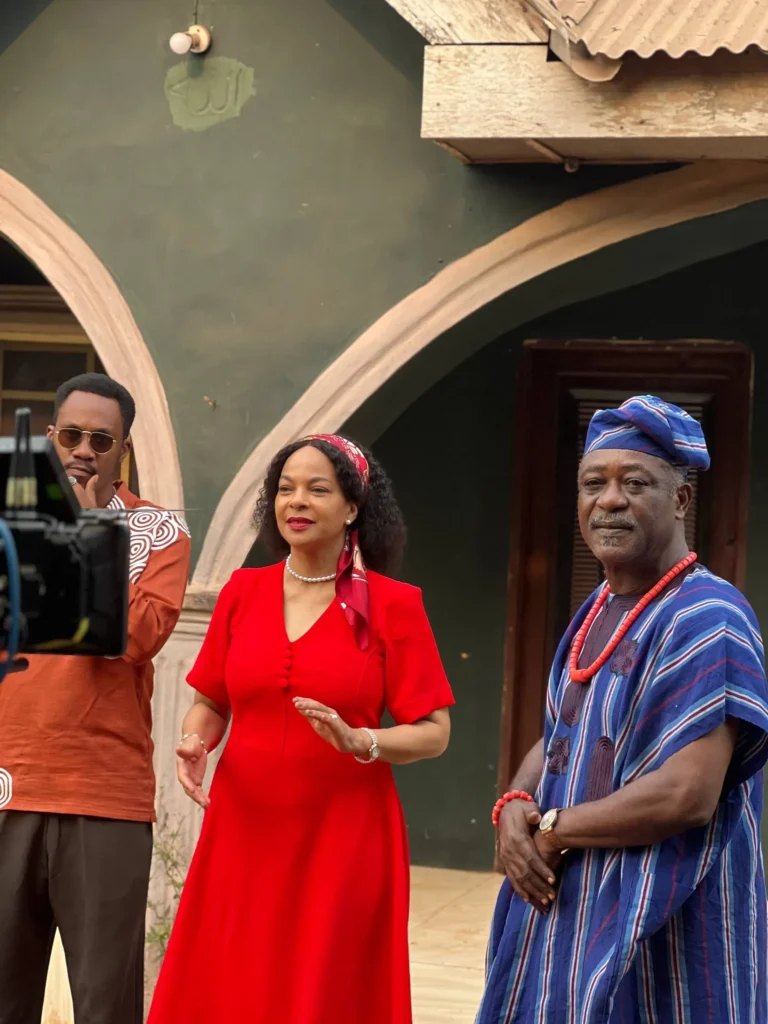
Why was Abeokuta specifically chosen to tell this story?
Abeokuta has a small-town texture and rhythm that is distinct from, say, Ibadan. If we had shot in Ibadan, the entire visual and emotional character of the film would have been different because I love to adapt to the soul of the location.
Aside from the script being written for Abeokuta, a major reason for choosing Abeokuta was its inherent colour palette, which became central to our visual story. The two dominant colours in the film are orange and green, and Abeokuta naturally provides them. The city has a distinctive orange hue from its rocky terrain, and then it unfolds into the lush greens of its forests and vegetation. This natural contrast directly influenced our colour symbolism.
And on a practical level, yes, we shot entirely on location in Abeokuta to capture authenticity. It’s actually a great compliment to our production design team that this next part often goes unnoticed: the interior of the main house was actually built and shot in a studio in Ikeja. We meticulously recreated the space to match the exterior we filmed in Abeokuta, ensuring the seamlessness you experienced.
What stopped you from shooting in Abeokuta since you were already there for some scenes? Were there constraints that led to shooting in a Lagos studio?
The constraint was never Abeokuta itself, the spirit of that place is undeniable. It was specifically the architecture of the interior of Baba Kola’s house. The exterior was perfect; It told everything you needed to know about Baba Kola’s history, his roots, personality and it felt familiar to my own history.
However, the interior spaces were not suitable with our visual language. They were limiting for camera, production design and the general artistic and emotional atmosphere we needed to create. Rather than settle for a compromise that would dilute the film’s power, we made a deliberate choice to move to a studio. This allowed us to construct an interior that wasn’t just a set, but a controlled environment. The studio had its own limitations on angles. The decision came down to choosing which set of challenges were the most manageable for the vision.
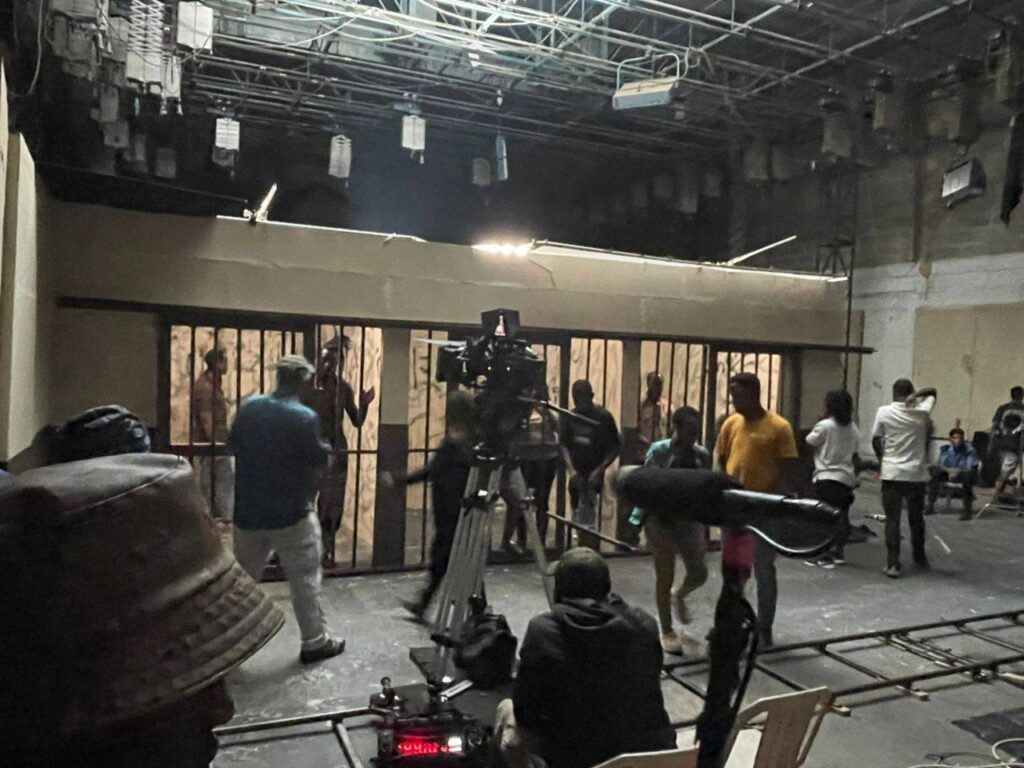
What was your work with the production design department like to bring the interior to life in the Lagos studio?
It was an immensely detailed and collaborative process. Our paramount objective, the moment we decided on the studio was seamless integration. The question for all of us was: “How do we ensure the audience feels absolutely no discontinuity between the exterior shot on location and the interior we build?”
Bola Bello, our exceptional production designer, and his entire team were instrumental in achieving this. We engaged in deep conversations that covered everything from ensuring architectural references and structural proportions were perfectly mirrored, down to the most micro-level details.
We had various conversations on colour palettes to help in transplanting the soul of that place into the studio, ensuring every element, every texture, felt authentically lived-in and aligned with the world we built.
Finally, you mentioned Lost in Translation, Fences, Seven Samurai, Amélie, Hitchcock’s Psycho, and a few others as references. These films have distinct tones, structures, and visual styles. How did each of them, in their own way, influence The Lost Days? Were there specific elements from each film that you aimed to incorporate?
These inspirations are first united by their unshaking pacing, which ‘The Lost Days’ sort to excel in. The first half of my inspiration centred on intimacy; capturing the nuances of love, connection, and family ties. For this, I looked to films like ‘Really Love’, for assured pacing that allows quiet moments of connection to feel honest and profound. From Fences, I drew on the powerful dynamics of an estranged father-son relationship and how dialogue can carry immense weight. There’s also a touch of the Cinderella archetype in how we framed Chisom’s vulnerability and presence, treating her not as a victim but as a figure of poetic dignity in distress.
The second half of my inspiration dealt with the gritty, darker elements of the story. Seven Samurai was a key reference for this; the barefoot hunting sequence in our film, for instance, was directly inspired by the solemn gravity of the warriors preparing for battle. However, the goal was never to copy shots directly. It was always about translating a feeling. I studied how these masters generated specific emotional energies, be it claustrophobic tension from Psycho or whimsical connection from Amélie—and then sought to authentically channel those energies into the world and characters of The Lost Days. It was about learning the language of cinema from the best and then using it to tell our own unique story.
The Lost Days stars Ifeoma Fafunwa, Bimbo Manuel, Baaj Adebule, Okutagidi Durotimi, Cynthia Clarke, Onuoha Aderonke. Written by Paul Rowlston and Abdul Tijani-Ahmed, the drama premiered July 11 on Prime Video.
Become a patron: To support our in-depth and critical coverage—become a Patron today!
Join the conversation: Share your thoughts in the comments section or on our social media accounts.
Track Upcoming Films: Keep track of upcoming films and TV shows on your Google calendar.
(Updated 11/09/2025: This interview was further edited by the interviewee and her team.)

